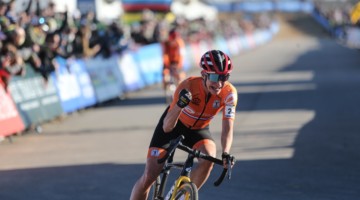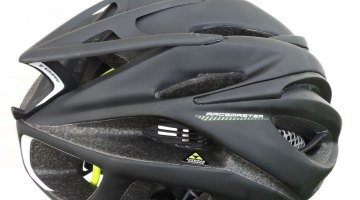Last year after Press Camp, we extensively rode with Kali Protective's Maya helmet, and while thankfully we didn't get an opportunity to prove the protective qualities of the helmet, we felt just a little safer knowing that Kali's founder, Brad Waldron, is obsessive over continuously making his helmets safer.
At this year's Press Camp, Waldron and Bryan Mason showed off the latest result of Kali's pursuit of a safer helmet with their aerodynamically-minded Tava. While many of Tava's aerodynamic test results are impressive, the real contribution to the helmet world comes from the inside of the shell with the new Bumper Fit 2.0 system, which you can see on photos below, which look much like blue suction cups.
Kali spent the last several years trying to combat two problems, rotational and low-impact forces. In the United States, safety standards have been put in place to ensure that helmets are preventing energy sustained in a crash from spiking above 200-250 G forces. Waldron cares about these extremely high-energy impacts, but he is also concerned about the low-energy impacts as well, and with good cause. He states that many experts consider a low speed impact that produces 80 G forces (think a crash close to 10 mph) can potentially produce a concussion.
After extensive testing at the lower impact 10mph hits, Waldron found that his latest Bumper Fit 2.0 system reduced G Forces of a crash by up to 12%. Just as impressive, those same suction cups along the liner were able to reduce rotational force by an average of 25%.
But as Waldron told us last year, it's difficult making safety sexy. Sadly, many riders may not be impressed by the Bumper Fit 2.0 system or the Composite Fusion Squared system of multi-directional cones that also focuses on the force of a head hitting the inside of a helmet after a crash. Sometimes defining sexy is dependent on weight savings and seconds saved through aerodynamics.
In wind tunnel testing, the Tava is competitive with many of the top helmets facing up against a direct headwind. In a slight to moderate crosswind, however, the Tava soars above the competition. With a five degree crosswind, the Tava saves an average of 50 grams, or to put it another way, save 25 seconds in a 50km race.
Bryan Mason admits that the helmet can get a little hot during slogging climbs under the sun, but at speeds of 17mph and above, the ventilation kicks in. While cyclocross is a winter sport, some of us find ourselves lining up to races in the heat of early-September, and an average of 17mph or above in a cyclocross race sounds like a blistering pace. Mason's trick is to temporarily lower his heat. While the aerodynamic gains are reduced this way, the large vents in the rear kick in at full throttle (we tested this the same afternoon and can back up his claim).
In our first ride with the helmet, however, it wasn't the safety features or the aerodynamics that were brought to our attention, but the brilliant usage of the BOA retention system. Dialing in the helmet to a head was simple, and it provided one of the most comfortable fits we've had. Stay tuned for a long-term review.
Target MSRP: $250
Available Sizes: S/M and M/L
Safety: Meets CPSC and EN 1078 standards
Weight: Sub 250 grams
More info: kaliprotectives.com





























